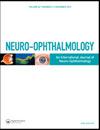长期A型肉毒杆菌神经毒素治疗亚洲面肌痉挛和良性原发性眼睑痉挛患者的耐受性和安全性综述。
IF 0.8
Q4 CLINICAL NEUROLOGY
Neuro-Ophthalmology
Pub Date : 2021-05-19
eCollection Date: 2021-01-01
DOI:10.1080/01658107.2021.1916043
引用次数: 0
摘要
本文报道了A型肉毒杆菌神经毒素在亚洲良性原发性眼睑痉挛(BEB)和面肌痉挛(HFS)患者中的耐受性和长期安全性。我们对过去20年来在我们诊所连续接受肉毒杆菌毒素a (Botox)治疗的BEB和HFS患者的临床文件和手术记录进行了回顾性审查。我们回顾了确诊为BEB (n = 31)和HFS (n = 74)的105例患者的资料。所有的病人都是亚洲人。BEB的平均发病年龄为59岁(37-80岁),HFS为61岁(31-83岁)。平均随访时间为84个月(12-240个月),每位患者平均随访次数为19次(1-61次)。两种BEB患者的每次肉毒毒素剂量显著增加(16.5单位对21.6单位,p本文章由计算机程序翻译,如有差异,请以英文原文为准。
A Review of Tolerance and Safety Profiles of Long-Term Botulinum Neurotoxin Type A in Asian Patients with Hemifacial Spasm and Benign Essential Blepharospasm.
ABSTRACT This article reports the tolerance and long-term safety profiles of botulinum neurotoxin type A among Asian patients with benign essential blepharospasm (BEB) and hemifacial spasm (HFS). We performed a retrospective review of clinical documents and procedure records of consecutive BEB and HFS patients receiving onabotulinum toxin A (Botox) treatment in our clinic over the past 20 years. We reviewed the information of 105 patients diagnosed with BEB (n = 31) and HFS (n = 74). All of the patients were Asian. The mean age of disease onset was 59 (range 37–80) years old for BEB and 61 (range 31–83) for HFS. The mean follow up was 84 (range 12–240) months and the mean number of sessions per patient was 19 (range 1–61). The botulinum toxin dose per session increased significantly in both BEB (16.5 versus 21.6 units, p < .05) and HFS (22.6 versus 26.9 units, p < .05) patients after a mean of 18 sessions; however, the onset time, effective duration and subjective treatment outcome were similar over time in both BEB and HFS patients. At least one local complication was reported among 26% and 41% of patients with BEB and HFS respectively, with ptosis (32%) being most frequent.
求助全文
通过发布文献求助,成功后即可免费获取论文全文。
去求助
来源期刊

Neuro-Ophthalmology
医学-临床神经学
CiteScore
1.80
自引率
0.00%
发文量
51
审稿时长
>12 weeks
期刊介绍:
Neuro-Ophthalmology publishes original papers on diagnostic methods in neuro-ophthalmology such as perimetry, neuro-imaging and electro-physiology; on the visual system such as the retina, ocular motor system and the pupil; on neuro-ophthalmic aspects of the orbit; and on related fields such as migraine and ocular manifestations of neurological diseases.
 求助内容:
求助内容: 应助结果提醒方式:
应助结果提醒方式:


